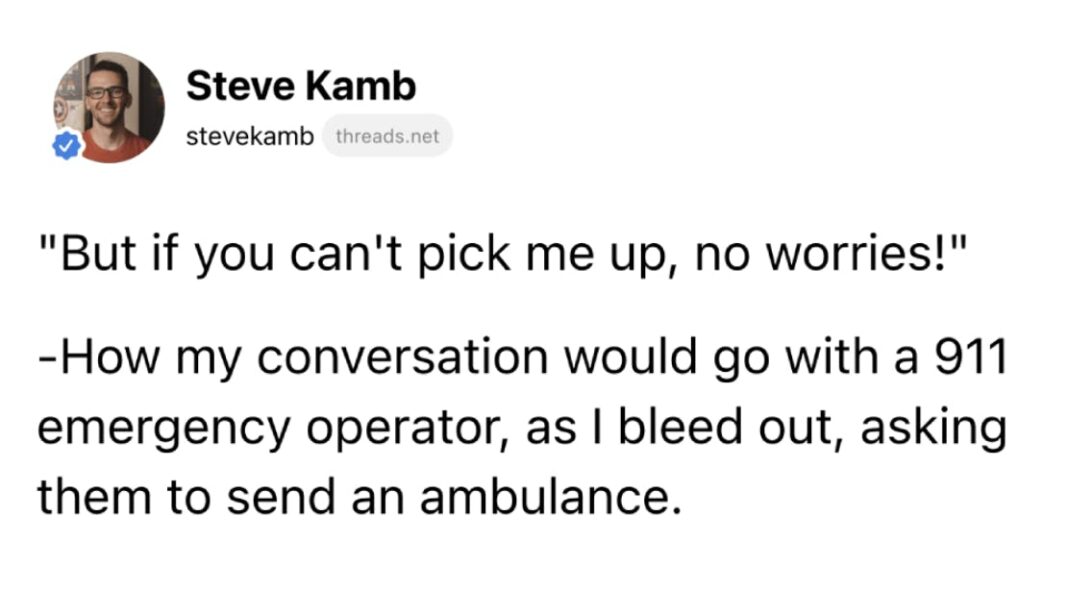Introduction
Eating disorders have become a growing concern worldwide, affecting millions of people of all ages, genders, and backgrounds. These complex mental health conditions often go unnoticed until they have already taken a significant toll on an individual’s physical and emotional well-being. But what if you could spot the warning signs early on? Would you know what to look for?
Early detection of eating disorders is crucial. The sooner these disorders are identified, the better the chances of effective treatment and recovery. In this blog post, we’ll explore the eight warning signs of eating disorders that you should be aware of. Understanding these signs could make all the difference in the life of someone you care about.
What Are Eating Disorders?
Definition and Overview
Eating disorders are serious mental health conditions characterized by abnormal or disturbed eating habits. These disorders can lead to severe physical and psychological consequences if left untreated. Eating disorders are not just about food; they often stem from complex issues involving self-esteem, control, and a desire to cope with difficult emotions or situations.
Common Types of Eating Disorders
There are several types of eating disorders, each with its own set of symptoms and challenges. Below are the most common types:
Anorexia Nervosa
Anorexia Nervosa is characterized by an intense fear of gaining weight and a distorted body image, leading to extreme restriction of food intake. Individuals with anorexia may see themselves as overweight, even when they are dangerously underweight.
Bulimia Nervosa
Bulimia Nervosa involves cycles of binge eating followed by purging behaviors such as vomiting, excessive exercise, or the use of laxatives. This disorder is often associated with feelings of guilt and shame about eating.
Binge Eating Disorder
Binge Eating Disorder is characterized by recurrent episodes of eating large quantities of food, often quickly and to the point of discomfort. Unlike bulimia, binge eating is not followed by purging, leading to various health complications.
Other Specified Feeding or Eating Disorder (OSFED)
OSFED is a category that includes eating disorders that do not meet the criteria for anorexia, bulimia, or binge eating disorder but are still severe and life-threatening. This category recognizes the complexity and variation in eating disorder symptoms.
The Importance of Recognizing Warning Signs
The Role of Awareness
Awareness is the first step in combating eating disorders. Recognizing the warning signs early on can lead to timely intervention, which is crucial for successful treatment and recovery. Many people with eating disorders go unnoticed because the symptoms can be subtle or mistaken for normal behavior, especially in a society that often glorifies dieting and weight loss.
Potential Consequences of Ignoring Symptoms
Ignoring the symptoms of an eating disorder can have devastating consequences. Without proper treatment, eating disorders can lead to severe physical health problems, including heart failure, digestive issues, and malnutrition. They can also result in long-term psychological damage, affecting a person’s ability to lead a fulfilling life.
8 Warning Signs of Eating Disorders
1. Preoccupation with Weight, Food, and Dieting
One of the earliest and most telling signs of an eating disorder is an obsessive focus on weight, food, and dieting. This may manifest as constant calorie counting, reading food labels compulsively, or talking about diets non-stop. While being health-conscious is important, an excessive preoccupation with these factors can indicate an underlying problem.
2. Drastic Weight Fluctuations
Significant and unexplained changes in weight, either up or down, can be a red flag for an eating disorder. Rapid weight loss is often associated with anorexia, while weight fluctuations can be linked to bulimia or binge eating disorder. It’s important to pay attention to these changes, especially if they are accompanied by secretive eating habits or frequent trips to the bathroom after meals.
3. Unusual Eating Habits or Rituals
People with eating disorders often develop strange eating habits or rituals. This might include cutting food into tiny pieces, eating very slowly, or avoiding entire food groups. These behaviors are often a way to exert control over food and can be a significant indicator of a deeper issue.
4. Avoidance of Social Situations Involving Food
Someone with an eating disorder may begin to avoid social situations that involve food, such as family dinners, parties, or eating out with friends. This avoidance is often driven by anxiety about eating in front of others or fear of losing control over their food choices.
5. Excessive Exercise
While regular exercise is part of a healthy lifestyle, excessive exercise can be a sign of an eating disorder, particularly in those with anorexia or bulimia. This might include working out multiple times a day, exercising even when injured or ill, or feeling extreme guilt for missing a workout.
6. Emotional and Behavioral Changes
Eating disorders can lead to significant changes in mood and behavior. These might include irritability, depression, anxiety, or withdrawal from friends and activities that were once enjoyed. The psychological toll of an eating disorder can be just as damaging as the physical effects.
7. Physical Health Complications
Physical symptoms such as fatigue, dizziness, fainting, hair loss, dry skin, and irregular menstrual cycles (in women) can be signs of an eating disorder. These symptoms are often the result of malnutrition or the body being deprived of essential nutrients.
8. Denial of Hunger or Eating Problems
Individuals with eating disorders may deny feeling hungry or refuse to acknowledge that they have a problem with eating. This denial is often a defense mechanism, making it difficult for them to seek or accept help.
The Psychological Impact of Eating Disorders
Mental Health Challenges
Eating disorders are closely linked with other mental health issues, including depression, anxiety, and obsessive-compulsive disorder (OCD). The emotional pain that accompanies an eating disorder can be overwhelming, leading to a vicious cycle of disordered eating and psychological distress.
The Connection Between Eating Disorders and Other Disorders
Research has shown that eating disorders often co-occur with other mental health conditions, such as substance abuse, self-harm, and personality disorders. Understanding this connection is vital for providing comprehensive treatment and support.
How to Support Someone with an Eating Disorder
Understanding and Compassion
If you suspect that someone you care about is struggling with an eating disorder, it’s important to approach them with understanding and compassion. Avoid judgment or criticism, and instead, offer your support and a listening ear.
Encouraging Professional Help
Encourage your loved one to seek professional help. Eating disorders are complex and require specialized treatment from healthcare providers who understand the intricacies of these conditions. Professional intervention is often necessary for recovery.
Avoiding Common Mistakes in Support
Supporting someone with an eating disorder can be challenging, and it’s easy to make mistakes. Avoid pressuring them to eat or making comments about their weight or appearance. Instead, focus on their overall well-being and the importance of their health.
Treatment Options for Eating Disorders
Therapy and Counseling
Therapy is a cornerstone of eating disorder treatment. Various forms of therapy can help individuals understand the root causes of their disorder and develop healthier coping mechanisms.
Cognitive Behavioral Therapy (CBT)
CBT is one of the most effective treatments for eating disorders. It helps individuals identify and change negative thought patterns and behaviors related to food and body image.
Family-Based Therapy (FBT)
FBT involves the family in the treatment process, providing support and education to help the individual recover. This approach is particularly effective for adolescents with eating disorders.
Medical and Nutritional Intervention
In addition to therapy, medical and nutritional support is often necessary to address the physical health issues caused by eating disorders. This may include working with a dietitian to develop a balanced meal plan or receiving medical treatment for any health complications.
Support Groups and Community Resources
Support groups can provide a sense of community and understanding for those struggling with eating disorders. These groups offer a safe space to share experiences and gain support from others who are going through similar challenges.
The Road to Recovery
What Recovery Looks Like
Recovery from an eating disorder is a journey that looks different for everyone. It involves not only restoring physical health but also addressing the underlying emotional and psychological issues.
The Role of Ongoing Support
Ongoing support is crucial for maintaining recovery. This may include continued therapy, regular medical check-ups, and a strong support network of family and friends.
Relapse Prevention
Relapse is a common part of the recovery process, but it doesn’t mean failure. With the right strategies and support, individuals can navigate setbacks and continue on the path to recovery.
Conclusion
Eating disorders are serious, life-threatening conditions that require attention and intervention. By recognizing the warning signs early, we can help those affected get the support and treatment they need. Remember, recovery is possible, and with the right help, individuals can reclaim their lives and health.
FAQs
What is the most common eating disorder?
Binge Eating Disorder is currently the most common eating disorder, affecting millions of people worldwide. Unlike other eating disorders, binge eating is not followed by purging, making it more challenging to detect.
Can men suffer from eating disorders too?
Yes, men can and do suffer from eating disorders. Although eating disorders are often perceived as a female issue, they affect people of all genders. In fact, the number of men diagnosed with eating disorders has been steadily increasing.
How can I approach someone I suspect has an eating disorder?
Approach the person with care and concern, avoiding judgment or criticism. Express your concern for their health and well-being, and encourage them to seek professional help. It’s important to be supportive and patient, as recovery is a complex process.
What is the first step in seeking help for an eating disorder?
The first step in seeking help for an eating disorder is acknowledging the problem and reaching out for support. This might involve talking to a trusted friend or family member, or contacting a healthcare provider who specializes in eating disorders.
Can eating disorders be cured?
While there is no one-size-fits-all cure for eating disorders, recovery is possible with the right treatment and support. Many individuals recover and go on to lead healthy, fulfilling lives, though the process can take time and may involve managing symptoms over the long term.




